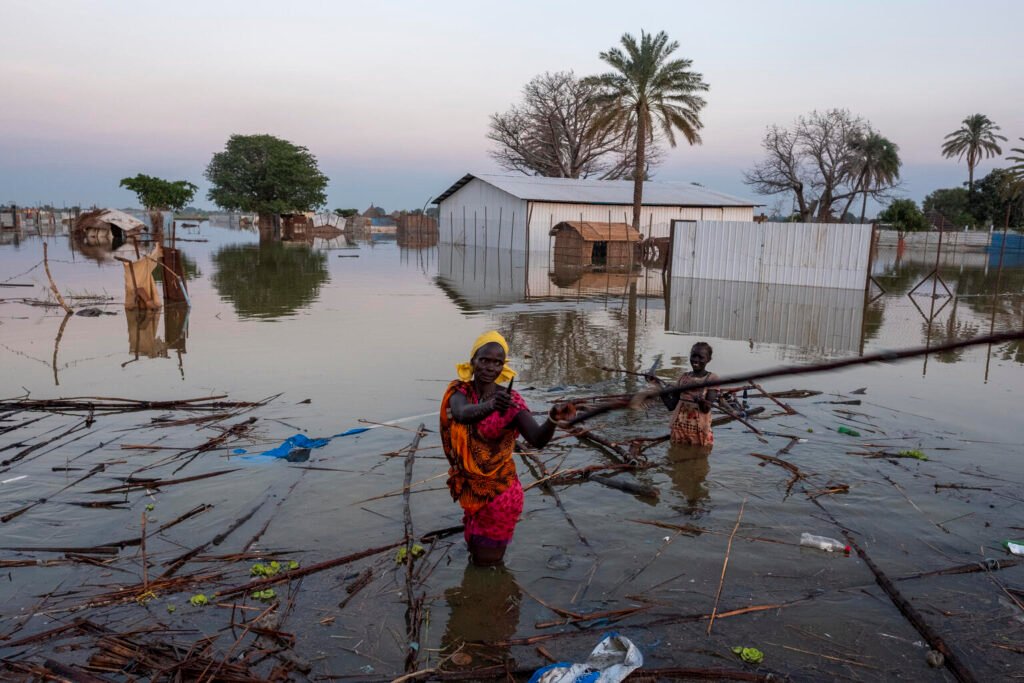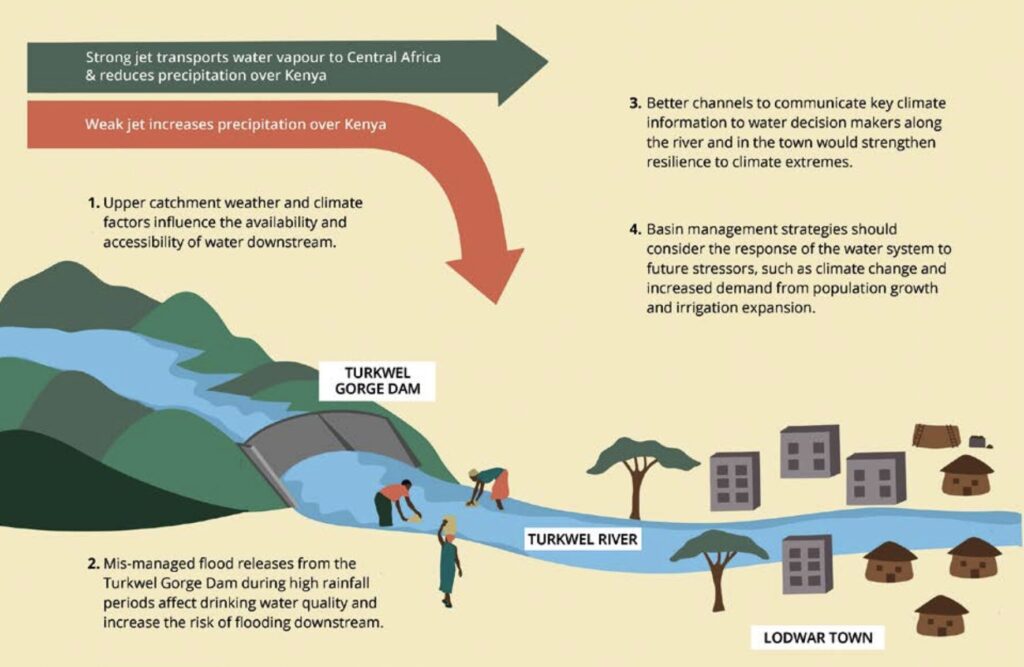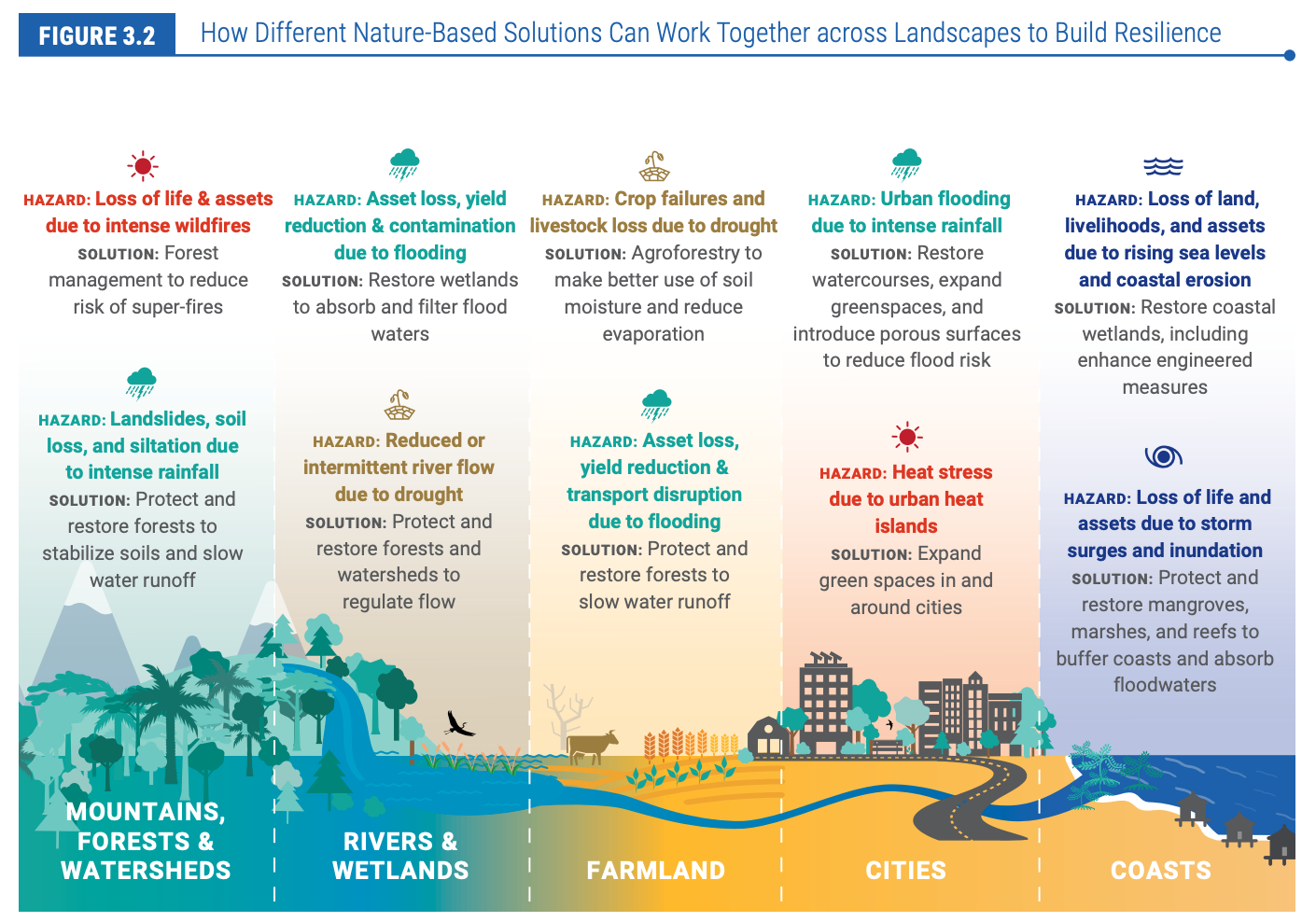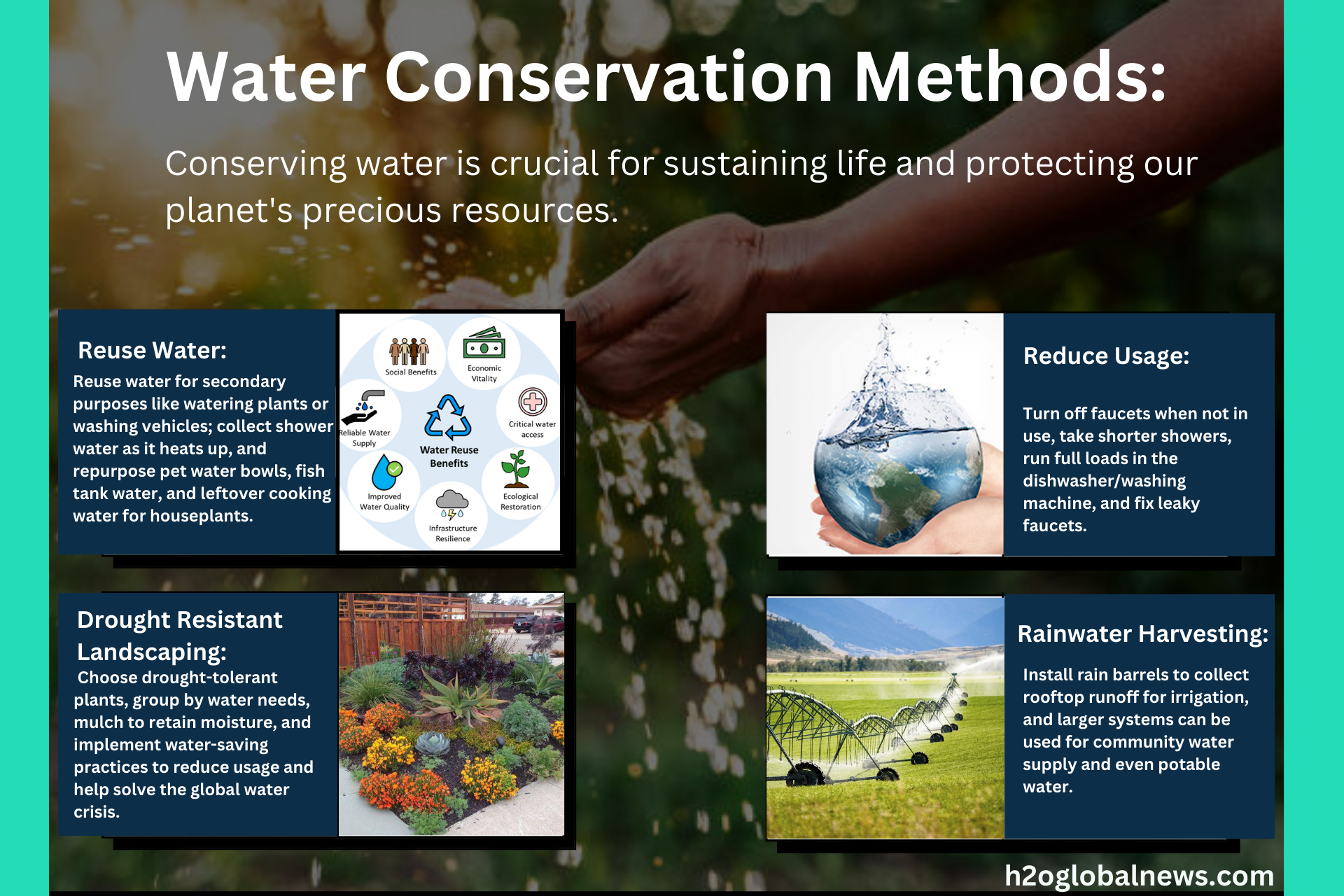How clean water access intersects climate adaptation strategies

Climate change is altering the global water landscape, exacerbating existing issues of water scarcity and quality. As temperatures rise and precipitation patterns shift, communities worldwide face increased challenges in accessing clean water. Effective climate adaptation strategies must prioritize water security, recognizing the intricate relationships between water access, climate resilience, and human well-being. This article explores the critical intersections between clean water access and climate adaptation, examining the ways in which water management can be optimized to support climate-resilient development and improve the lives of vulnerable populations. Integrating water and climate agendas is essential.
- Climate Resilience through Clean Water Access
-
Integrating Clean Water Access into Climate Resilience: A Key Adaptation Strategy
- What role does clean water access play in climate resilience and adaptation efforts?
- Water Security and Climate-Related Disasters
- Impacts on Human Health and Livelihoods
- Climate Change Mitigation and Adaptation Efforts
- 'Effective climate adaptation strategies for ensuring clean water access'
- Water Conservation and Efficiency
- Climate-Resilient Water Infrastructure
- Adaptive Water Management Practices
- What strategies can be implemented to enhance water supply resilience in the face of climate change?
- Infrastructure Resilience
- Water Management Practices
- Policy and Governance
- Effective water management techniques to mitigate water scarcity in a changing climate?
- Water Conservation Measures
- Watershed Management and Restoration
- Water Harvesting and Storage
- Frequently Asked Questions
Climate Resilience through Clean Water Access
Access to clean water is a critical component of climate adaptation strategies, as it directly impacts the ability of communities to withstand and recover from climate-related disasters. The intersection of clean water access and climate adaptation is multifaceted, involving not just the availability of water but also its quality, management, and distribution. As climate change continues to alter precipitation patterns, increase the frequency of extreme weather events, and raise temperatures, the strain on water resources intensifies. Therefore, integrating clean water access into broader climate adaptation strategies is essential for enhancing the resilience of communities worldwide.
Water Scarcity and Climate Change
Climate change exacerbates water scarcity by altering the patterns of rainfall and increasing evaporation due to warmer temperatures. This not only affects the quantity of water available but also its quality, as changing hydrological conditions can lead to increased concentrations of pollutants. Effective management of water resources is crucial in this context, requiring adaptive strategies that can respond to the variability and unpredictability introduced by climate change. This involves not just traditional infrastructure but also innovative approaches such as water harvesting and efficient irrigation systems.
Enhancing Water Security
Enhancing water security is a key aspect of climate adaptation, focusing on ensuring that communities have reliable access to clean water despite the challenges posed by climate change. This involves a range of measures, from protecting and restoring natural water ecosystems to implementing technologies that improve water efficiency and reduce waste. By bolstering water security, communities can better withstand climate-related shocks, such as droughts and floods, and maintain the health and productivity of their populations.
Community-Based Adaptation Initiatives
Community-based adaptation initiatives play a vital role in enhancing clean water access as part of climate adaptation strategies. These initiatives empower local communities to manage their water resources effectively, leveraging their knowledge and experience to develop contextually appropriate solutions. By supporting community-led water management projects, organizations can help build resilience at the local level, ensuring that adaptation efforts are tailored to the specific needs and conditions of each community.
| Adaptation Strategy | Description | Benefits |
|---|---|---|
| Water Harvesting | Collecting and storing rainwater or floodwater for use during dry periods. | Reduces reliance on groundwater, enhances water security. |
| Efficient Irrigation Systems | Implementing irrigation systems that minimize water loss. | Conserves water, supports agricultural productivity. |
| Community-Led Water Management | Empowering communities to manage their own water resources. | Enhances community resilience, ensures contextually appropriate solutions. |
Integrating Clean Water Access into Climate Resilience: A Key Adaptation Strategy
What role does clean water access play in climate resilience and adaptation efforts?

Access to clean water plays a crucial role in climate resilience and adaptation efforts. As the global climate continues to change, having a reliable source of clean water is essential for communities to withstand and recover from climate-related disasters. Clean water access enables communities to maintain their health, hygiene, and livelihoods, even in the face of droughts, floods, and other extreme weather events.
Clean water access is vital for communities to prepare for and respond to climate-related disasters. When communities have access to clean water, they are better equipped to withstand the impacts of droughts, floods, and other extreme weather events. For example, during a drought, having access to clean water can help communities maintain their hygiene and health.
- Communities with clean water access can maintain their hygiene and health during droughts and other climate-related disasters.
- Clean water access enables communities to continue their agricultural practices, even in the face of changing weather patterns.
- Having a reliable source of clean water can also help communities to recover more quickly from climate-related disasters.
Impacts on Human Health and Livelihoods
The availability of clean water has significant implications for human health and livelihoods, particularly in the context of climate change. When communities lack access to clean water, they are more vulnerable to water-borne illnesses and other health problems. In addition, clean water access is essential for maintaining livelihoods, such as agriculture and livestock production.
- Lack of clean water access can lead to increased incidence of water-borne illnesses, such as cholera and diarrhea.
- Clean water is essential for maintaining agricultural productivity and food security, particularly in areas where agriculture is a primary source of income.
- Access to clean water also enables communities to maintain their livestock, which can be an important source of income and nutrition.
Climate Change Mitigation and Adaptation Efforts
Clean water access can also play a role in climate change mitigation and adaptation efforts. For example, protecting and restoring watersheds can help to maintain water quality and reduce the risk of water-borne disasters. In addition, implementing water conservation measures can help to reduce the energy required to treat and transport water, which can contribute to greenhouse gas emissions.
- Protecting and restoring watersheds can help to maintain water quality and reduce the risk of water-borne disasters.
- Implementing water conservation measures, such as efficient irrigation systems, can help to reduce the energy required to treat and transport water.
- Promoting water-efficient practices can also help to reduce the economic impacts of climate change on water resources.
'Effective climate adaptation strategies for ensuring clean water access'

Effective climate adaptation strategies for ensuring clean water access involve a multi-faceted approach that considers the impacts of climate change on water resources. Climate change affects water availability, quality, and accessibility, making it essential to develop strategies that can mitigate these effects and ensure that communities have access to clean water.
Water Conservation and Efficiency
Implementing water conservation and efficiency measures is crucial for ensuring clean water access in the face of climate change. This involves adopting practices and technologies that reduce water waste and optimize water use.
- Implementing efficient irrigation systems in agriculture to reduce water consumption.
- Promoting water-saving appliances and practices in households and industries.
- Enhancing water storage infrastructure to capture and store rainwater and runoff.
Climate-Resilient Water Infrastructure
Investing in climate-resilient water infrastructure is vital for protecting water sources from the impacts of climate change, such as increased flooding and droughts. This includes designing and building infrastructure that can withstand extreme weather events and changing environmental conditions.
- Upgrading water treatment plants to handle changing water quality conditions.
- Constructing flood-resistant water storage facilities.
- Implementing green infrastructure, such as wetlands and green roofs, to manage stormwater runoff.
Adaptive Water Management Practices
Adopting adaptive water management practices enables communities to respond effectively to the changing conditions brought about by climate change. This involves monitoring water resources, predicting future changes, and adjusting management strategies accordingly.
- Establishing early warning systems for droughts and floods.
- Conducting regular water quality monitoring to identify potential risks.
- Developing and implementing water management plans that account for projected climate change impacts.
What strategies can be implemented to enhance water supply resilience in the face of climate change?

To enhance water supply resilience in the face of climate change, various strategies can be implemented that focus on improving the ability of water supply systems to withstand and recover from climate-related disruptions. This involves a multi-faceted approach that includes infrastructure improvements, water management practices, and policy adjustments.
Infrastructure Resilience
Enhancing the resilience of water supply infrastructure is critical to ensuring a stable water supply under changing climate conditions. This can be achieved through the adoption of robust design standards, the use of climate-resilient materials, and the implementation of green infrastructure solutions.
- Upgrading existing infrastructure to be more resilient to extreme weather events such as floods and droughts.
- Incorporating green infrastructure, like wetlands and green roofs, into urban planning to manage stormwater runoff and reduce the burden on traditional water supply systems.
- Implementing smart water grid technologies to enhance the efficiency and adaptability of water distribution systems.
Water Management Practices
Improving water management practices is essential for enhancing water supply resilience. This includes adopting more efficient water use practices, promoting water conservation, and implementing water recycling and reuse programs.
- Promoting water-saving technologies and practices among consumers to reduce overall water demand.
- Implementing water recycling and reuse systems to augment traditional water supplies.
- Developing and implementing effective water management plans that account for projected climate change impacts.
Policy and Governance
Effective policy and governance frameworks are necessary to support the implementation of strategies to enhance water supply resilience. This involves revising existing policies and regulations to accommodate climate change projections and promoting collaborative governance approaches.
- Updating water management policies to incorporate climate change projections and adapt to changing water availability.
- Fostering collaboration among different stakeholders, including government agencies, private sector entities, and local communities, to develop and implement climate-resilient water supply strategies.
- Investing in research and development to improve understanding of climate change impacts on water supplies and to identify innovative solutions to enhance resilience.
Effective water management techniques to mitigate water scarcity in a changing climate?

Effective water management techniques are crucial to mitigate water scarcity in a changing climate. The increasing global population, urbanization, and climate change have put immense pressure on the world's freshwater resources, making it essential to adopt innovative and sustainable approaches to manage water resources efficiently.
Water Conservation Measures
Implementing water conservation measures is a vital step in mitigating water scarcity. This can be achieved by promoting water-saving practices among households, industries, and agricultural sectors. Some effective water conservation measures include:
- Implementing water-efficient appliances and fixtures
- Promoting water-saving technologies and practices in agriculture
- Encouraging behavioral changes through education and awareness campaigns
Watershed Management and Restoration
Watershed management and restoration play a critical role in maintaining healthy water cycles and mitigating the impacts of climate change. Effective watershed management involves protecting and restoring natural habitats, such as wetlands and forests, which help to regulate water flows and improve water quality. Some key strategies for watershed management and restoration include:
- Restoring degraded watersheds and wetlands
- Implementing sustainable land-use practices to reduce erosion and sedimentation
- Protecting and preserving natural habitats that support biodiversity
Water Harvesting and Storage
Water harvesting and storage are essential techniques for mitigating water scarcity, particularly in areas with variable rainfall patterns. By capturing and storing rainwater or floodwater, communities can reduce their reliance on groundwater and surface water sources. Some effective water harvesting and storage techniques include:
- Constructing rainwater harvesting systems for non-potable uses
- Building reservoirs and dams to store water for irrigation and other purposes
- Implementing aquifer recharge systems to replenish groundwater resources
Frequently Asked Questions
How does access to clean water impact climate adaptation?
Access to clean water is crucial for climate adaptation as it directly affects communities' ability to withstand and recover from climate-related disasters. With clean water, communities can maintain health, hygiene, and sanitation, reducing the risk of water-borne diseases that often accompany climate-related events. This, in turn, enhances their resilience to climate change.
What role does clean water play in disaster risk reduction?
Clean water access plays a significant role in disaster risk reduction by enabling communities to prepare for and respond to climate-related disasters. Having a reliable source of clean water helps communities maintain hygiene and health, reducing the risk of disease outbreaks. This is particularly important during and after disasters, where contaminated water sources can exacerbate the crisis.
How can climate adaptation strategies improve water access?
Climate adaptation strategies can improve water access by investing in water infrastructure that is resilient to climate change. This includes building water storage facilities, implementing efficient irrigation systems, and protecting watersheds from degradation. By doing so, communities can ensure a more reliable access to clean water, even in the face of changing precipitation patterns and increased frequency of extreme weather events.
What are the economic benefits of integrating clean water access into climate adaptation?
Integrating clean water access into climate adaptation strategies can have significant economic benefits. By reducing the impacts of climate-related disasters and improving health outcomes, communities can avoid costly losses and reduce the economic burden of disease. Additionally, reliable access to clean water can support economic development by enabling businesses and industries to operate more efficiently and sustainably.

Leave a Reply